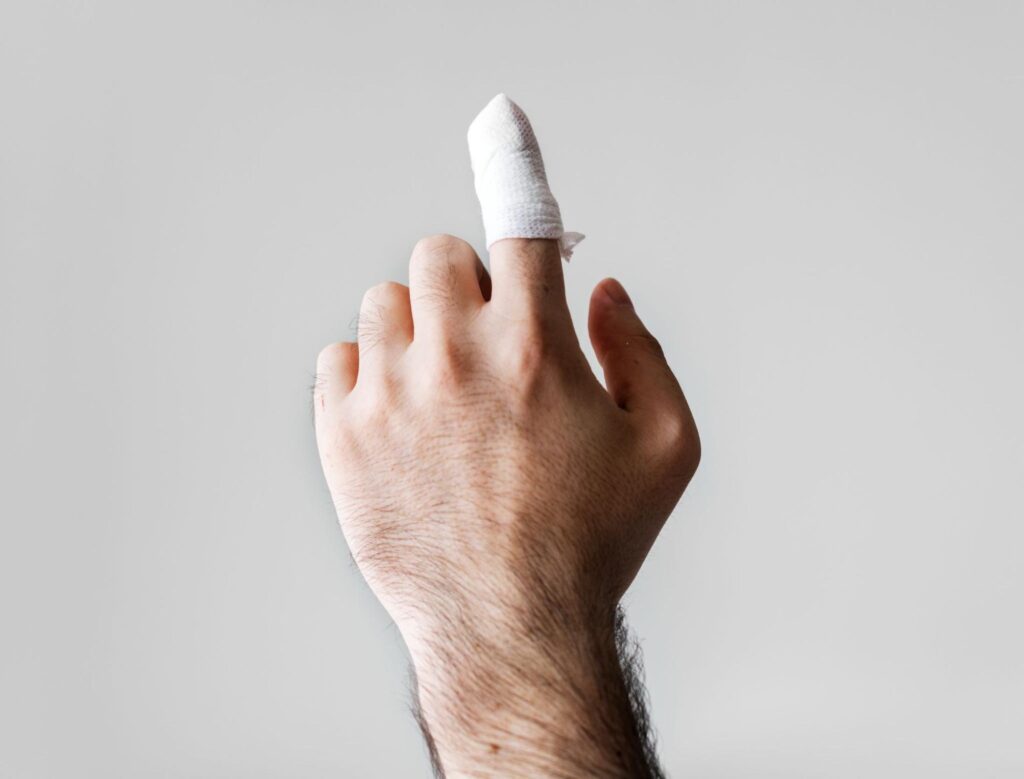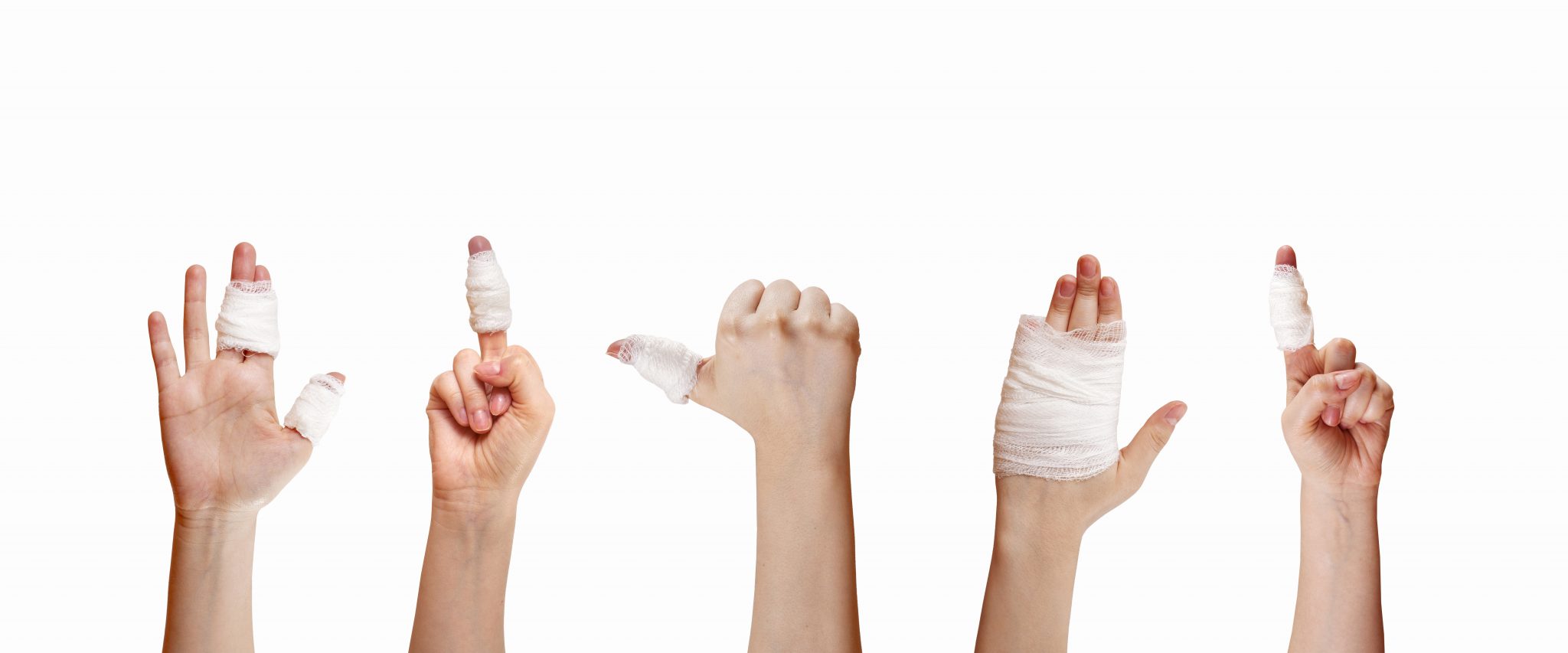In the world of ball sports, finger injuries are not just common; they’re almost a rite of passage. From the cricket pitches to the netball courts, and across the rugged footy fields, these injuries are as varied as the sports themselves.
Yet, the humble ‘jarred finger,’ often underestimated, can be more than just a temporary hindrance. At Coast Sport, we recognise the complexity of these injuries and the importance of addressing them with the seriousness they deserve. Here’s all you need to know about jarred finger injuries and when to seek help.

The Complexity of Finger Injuries in Ball Sports
Injuries in ball sports often occur at the proximal interphalangeal joint, located just past the knuckles towards the fingertips. This area is particularly vulnerable due to its exposure and role in gripping and catching. When considering the anatomy and function of the hand, it’s clear that even a seemingly minor injury can have significant consequences.
- Common mechanisms of injury in ball sports, such as catching, throwing, or accidental strikes.
- The role of the proximal interphalangeal joint in hand function.
- The potential for long-term impact from injuries in this area, affecting daily activities and sports performance.
While it might be tempting to dismiss a jarred finger as a minor issue, the reality is that injuries to this joint can be complex and require specialised attention to prevent long-term problems.


Effects of Proximal Interphalangeal Joint Injuries
It’s important to understand that the intricate structures within the hand require precise and timely treatment to maintain their function and strength. The moment of impact —a sudden clash on the field — can leave you with a painful, swollen, and maybe even broken finger.
It seems trivial at first, but the inability to move the finger properly can persist for weeks or even months. It’s a scenario many can relate to, but beneath the surface, these injuries involve highly complex structures of the hand that demand correct treatment for full recovery.
Proximal interphalangeal joint injuries are more than just a nuisance; they can significantly affect hand function and quality of life. The severity of these injuries varies, but their impact can be far-reaching.
- Ligament damage leads to joint instability.
- Possible bone and tendon injuries.
- Reduced hand strength, dexterity, and overall functionality.
Recognising the seriousness of these injuries is the first step in seeking appropriate treatment and preventing long-term complications.

Importance of Proper Treatment for Jarred Fingers
Seeking prompt jarred finger treatment is essential for a full and speedy recovery. At Core Physiotherapy & Exercise Centres, we emphasise the necessity of timely and specialised care for these injuries.
- Immediate steps to take following a finger injury.
- The importance of specialised hand therapy in the treatment process.
- Long-term benefits of proper treatment, including prevention of chronic issues and osteoarthritis.
Ignoring the severity of a jarred finger can lead to persistent problems and hinder your ability to perform everyday tasks or return to sports.
Treatment Approaches and Recovery for Finger Injuries
Effective treatment for finger injuries, especially at the proximal interphalangeal joint, involves a blend of immediate care and long-term rehabilitation strategies.
Initial treatments, such as compression for swelling and splinting for support.
Rehabilitation exercises to restore range of motion and strength.
The role of experienced hand therapists in guiding the recovery process.
Our approach at Coast Sport ensures that each treatment plan is tailored to the individual’s needs, promoting quick recovery and preventing future injuries.
When ‘Just a Jarred Finger’ Needs Serious Attention
When it comes to hand injuries, particularly in sports or physical activities, it’s common to encounter terms like “jarred finger” and “broken finger.” While these conditions may appear similar to the untrained eye, they are, in fact, quite distinct both in terms of their nature and the required treatment. Understanding the differences between a jarred finger and a broken finger is crucial for effective treatment and swift recovery.
Jarred finger vs broken finger:
A jarred finger typically refers to an injury caused by a sudden impact or force to the finger, often resulting in a sprain or strain of the ligaments around the finger joints. This type of injury is common in ball sports where the fingers are at risk of being hit by the ball or during a fall.
Characteristics and Symptoms of Jarred Finger:
- Pain and swelling around the affected joint, usually without significant deformity.
- Difficulty in moving the finger, with a feeling of stiffness or ‘locking’.
- Bruising or discolouration around the affected area.
- The pain is localised, usually around a joint, and increases with movement.
A broken finger, or a finger fracture, involves a break or crack in one of the finger bones (phalanges). This can occur from a direct blow, crushing injury, or a fall. The severity can range from a small crack to a complete break that may pierce through the skin.
Characteristics and Symptoms of Broken Finger:
- Sharp, intense pain immediately following the injury.
- Noticeable deformity or misalignment of the finger.
- Swelling, bruising, and tenderness around the affected area.
- Inability to move the finger normally or bear weight without pain.
- In severe cases, some of the bone may protrude through the skin.
At Coast Sport, we encourage patients not to adopt a “wait and see” approach. Prompt treatment is key to a full recovery, allowing you to return to your daily activities and sports as quickly as possible.

Treating Finger Injuries with Care
These injuries are important to get assessed appropriately by a practitioner with experience in hand therapy to ensure the symptoms resolve quickly, allowing you to get back to sport and life as quickly as possible.
Significant injuries in the finger are common and can on occasion require surgery. Dismissing finger injuries as just “a jarred finger” can lead to a lifetime of pain and disability through reduced range of motion, weakness and the potential for early onset osteoarthritis.
These injuries can be time-sensitive so it is important not to take the “wait-and-see approach”.Get in early to achieve the best outcome, and get back to moving well, feeling well and performing well as soon as possible. Book an appointment online today for expert care tailored to your needs.


 Helping the Central Coast Feel Well, Move Well and Perform Well!
Helping the Central Coast Feel Well, Move Well and Perform Well!